Keeping Your Boat Dry
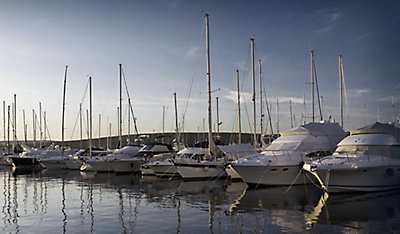
Reducing the Relative Humidity
It's the weekend and because you miss your boat, you've decided to spend the weekend at the dock. After a great meal and an action packed movie, you're ready to hit the hay. But while lying in bed below the hatch – you suddenly feel something wet hit your forehead! Due to factors such as heating moist air, cooking with propane or even two people breathing in an enclosed environment you have increased the level of relative humidity within your boat. Relative humidity is the percentage of moisture in the air compared to how much moisture the air will hold before it turns into condensation – and when it gets too high it causes water to condense on colder surfaces….like your hatch.
There are multiple ways that you can reduce the relative humidity inside your boat – so let's review both powered options for when you are plugged in and non-powered options for when you're not.
Powered Options
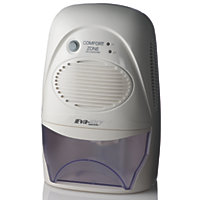
Electric dehumidifiers are a great way to pull unwanted moisture out of the air. There are many options, but one brand we recommend is Eva-Dry – a small and quiet unit with a reservoir that collects water. It can operate safely 24/7, it automatically shuts down when full and it's small enough to be placed almost anywhere.
Products such as the DryWave Air Dryer help eliminate dampness, mildew and condensation by raising the ambient dew point, which inhibits surface condensation. They are good for keeping smaller areas (such as closets) dry and are safe to operate 24/7 with no supervision.
If you live aboard you may want to consider a much larger dehumidifier, available at most home improvement stores. These can pull an amazing amount of water out of the air – potentially too much if you're not careful. Thankfully these bigger units allow you to set the level of humidity you are comfortable with and will shut down when that level is reached – so make sure you don't set it any lower than 50% or you may overdo it – causing wood to dry out and crack.
Non-Powered Options
There are a multitude of chemical based desiccants that pull water out of the air – including
products from
DampRid, Dri-Z-Air, and
NoDamp. While these come in different shapes and sizes, they all perform the same feat – capturing
moisture and combining it with something like calcium chloride to create a non-toxic liquid solution in
the bottom of the container.
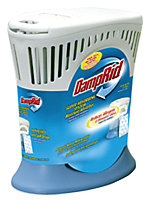
An additional option is the non-powered Eva Dry products. These collect moisture by using a renewable silica gel technology that absorbs and holds the water. Over time the crystals will change from blue to pink – letting you know they've reached their full capacity. At this point you need to plug the unit into an electrical socket in a well-ventilated area to “renew” the crystals. After 12 to 15 hours the crystals will have released the absorbed moisture and the unit is ready to be used again – for up to 10 years!
Lastly – it's extremely helpful to cover windows and hatches with a protective layer – either inside, outside or both. Using hatch covers can greatly reduce the temperature differential on the hatch surface while adding a protective layer of plastic sheeting inside can create an excellent thermal barrier. Both of these options will greatly reduce condensation around your portholes and hatches when you're spending time onboard.
Ensuring Proper Ventilation
Equally important to removing the moisture from the air is making sure that you have proper ventilation. Air that can't move around becomes stagnant and provides opportunity for mold and mildew to flourish – so let's explore some options for keeping the air inside your boat moving.
Air Dryers
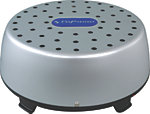
Air Dryers are a great way to move air around your boat and we stock several from trusted brands.
Heaters
While you can't run them 24/7 when you are not onboard, a built in cabin heater is a great option to warm the air within your boat when you are. Cabin heaters come in diesel, propane or electric models depending on how much heat you want to provide, how much power you have available (on or off the dock) and how large your boat is. We stock a multitude of popular cabin heaters from Dickinson, Heatercraft, King, Red Dot and Sig Marine.
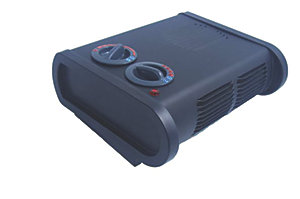
While any one of these heaters is great for keeping your boat warm – heating the air isn't the whole story. You need to combine that warmth with proper ventilation (like a slightly cracked hatch or porthole) to really dry out a damp boat. Without ventilation moisture is stuck inside and while the heat will draw the moisture into the air, without anywhere to go it will soon be condensing on cooler surfaces like you hatch – putting us back to square one. With even a small amount of ventilation the warm, moisture laden air rises and vents out the opening – taking the water with it. While this will allow a little cool air into the boat, the circulation of that fresh air is what ultimately helps dry out your boat since warm air can hold more moisture than cool air. It's important to remember that cabin heaters should only be run while you are onboard and can monitor them safely.
Vents
There are many types of vents you can install – but below are two types that will keep air circulating throughout your boat year-round if properly placed.
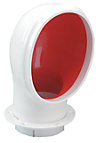
Solar Vents – these vents are installed either through the deck or in a hatch lens and are powered by solar technology with a rechargeable battery that keeps the vent operating 24/7. It's best to install one for intake and one for exhaust for the most effective exchange of air. They can be turned off when you don't want to use them and can be completely closed up for green water shut-off when you are underway. We offer several solar vents from Nicro.
Keeping Your Boat Clean
While all of the options above will help keep mold at bay, the last important step is to remove as much mold and mildew as possible before it gets a chance to really take hold. Wiping surfaces down with a 10% bleach solution is a great way to kill mold – but it's a lot of work to reach every nook and cranny on your boat. Thankfully, there is a great all-natural product that helps you do this with no harsh chemicals – Kanberra Gel.
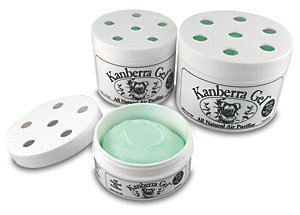
As you can imagine, there are many factors that will determine how much moisture you need to remove from your boat – including how much time you spend onboard, how damp an area you live in and how cold the ambient temperature is. It may take a little experimentation to get it right – but if you try a combination of the ideas above you will come back to a fresh, dry and clean boat next spring.
We hope you've enjoyed this Navigator on keeping your boat dry – but if you have any additional questions, please don't hesitate to contact our product experts at (800) 426-6930.